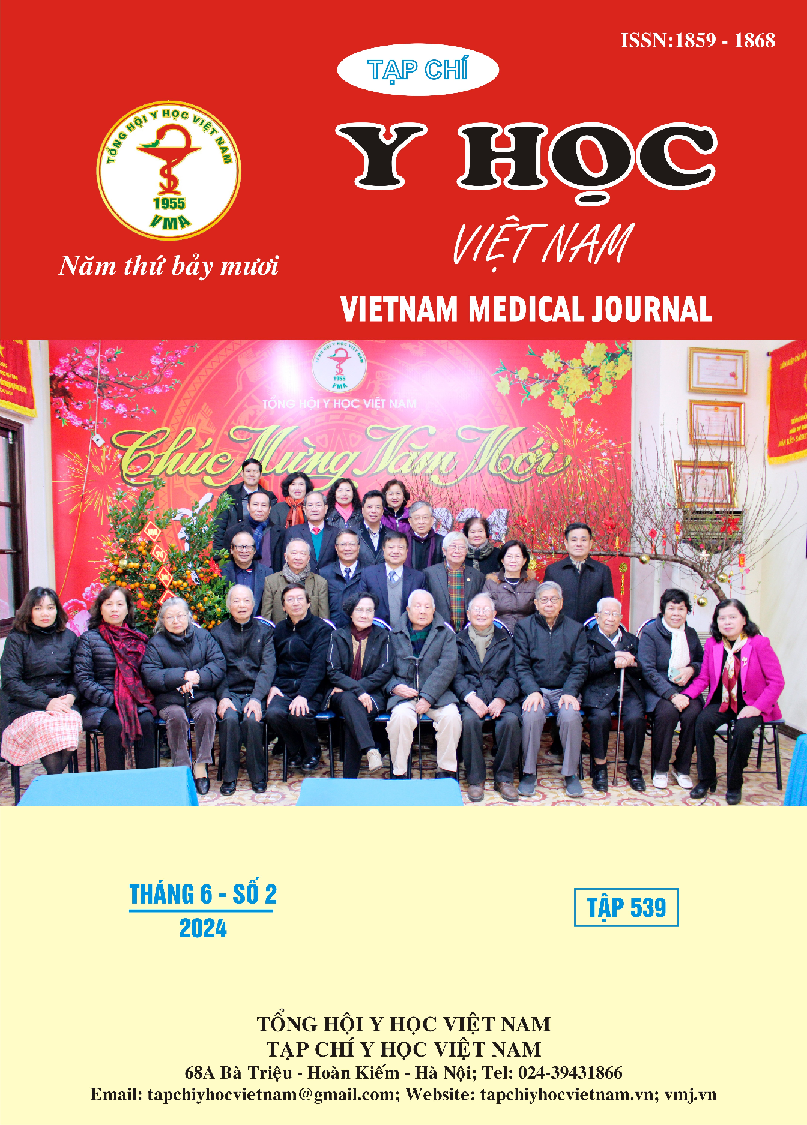CORRELATION BETWEEN CLINICAL AND MORPHOLOGICAL CHARACTERISTICS ON CONEBEAM CT IMAGE OF PATIENTS WITH LOWER WISDOM TEETH CAUSING COMPLICATIONS
Main Article Content
Abstract
Objectives: Analyzing the correlation between clinical characteristics and morphology of mandibular wisdom teeth (MWT) on Conebeam CT. Subjects and methods: The study subjects were patients with MWT causing complications who came for examination and treatment at the Dental and Maxillofacial Clinic, Department of Stomatology, University of Medicine and Pharmacy - Hanoi National University, in accordance with the selection criteria. and exclusion criteria. Research method is a cross-sectional descriptive study, sample size is 98 patients corresponding to 98 CBCT films with full images of 152 MWT. Results: Wisdom teeth misaligned 80 - 100 degrees are 0.21 times less likely to cause decay on the distal surface of tooth 7. Wisdom teeth with an inclination of 11-79 degrees are 0.42 times less likely to have decay. Fully erupted teeth have a 2.39 times higher risk of tooth decay. Withholding food increases the risk of inflammation around the crown of the wisdom tooth by 12.21 times. Wisdom teeth in position B are 0.43 times less likely to have inflammation around the crown of the wisdom tooth. Patients who come to the doctor for the reason of pain are less likely to have pain. The risk of causing alveolar bone loss is more than 0.17 times. Conclusion: In our study, there was a statistically significant relationship between the MWT axis relationship compared to R7 and complications of R7 far facial caries and MWT caries. Wisdom tooth eruption is also associated with complications of MWT. Inflammatory complications around the MWT body and the MWT boss are related to the patient's reason for examination as well as the MWT depth compared to the R7 occlusal plane.
Article Details
Keywords
mandibular wisdom teeth, complication, CBCT
References
2. D. Li, Y. Tao, M. Cui, W. Zhang, X. Zhang, và X. Hu, “External root resorption in maxillary and mandibular second molars associated with impacted third molars: a cone-beam computed tomographic study”, Clin. Oral Investig., vol 23, số p.h 12, tr 4195–4203, tháng 12 2019, doi: 10.1007/s00784-019-02859-3.
3. Bùi Thanh Ngoan, “Nhận xét về mối tương quan giữa hình thái mọc và các biến chứng của răng khôn hàm dưới”. Truy cập: 15 Tháng Hai 2024. [Online]. Available at: https://thuvien.hmu.edu.vn/pages/cms/FullBookReader.aspx?Url=/pages/cms/TempDir/books/202012140933-9dd4be7c-4e64-4fa7-a453-7d756a4ce262//FullPreview&TotalPage=70&ext=jpg#page/44/mode/2up
4. “Khảo sát tỷ lệ và đặc điểm lâm sàng x-quang của răng khôn hàm dưới có lợi trùm, đánh giá kết quả xử trí tại Bệnh viện Bạch Mai”. Truy cập: 15 Tháng Hai 2024. [Online]. Available at: https://thuvien.hmu.edu.vn/pages/cms/FullBookReader.aspx?Url=/pages/cms/TempDir/books/201808131028-ca6d12bc-1476-4d27-a2a7-bf3808d3336a//FullPreview&TotalPage=66&ext=jpg#page/44/mode/2up
5. Y. Chen và c.s., “Three-dimensional position of mandibular third molars and its association with distal caries in mandibular second molars: a cone beam computed tomographic study”, Clin. Oral Investig., vol 24, số p.h 9, tr 3265–3273, tháng 9 2020, doi: 10.1007/s00784-020-03203-w.


